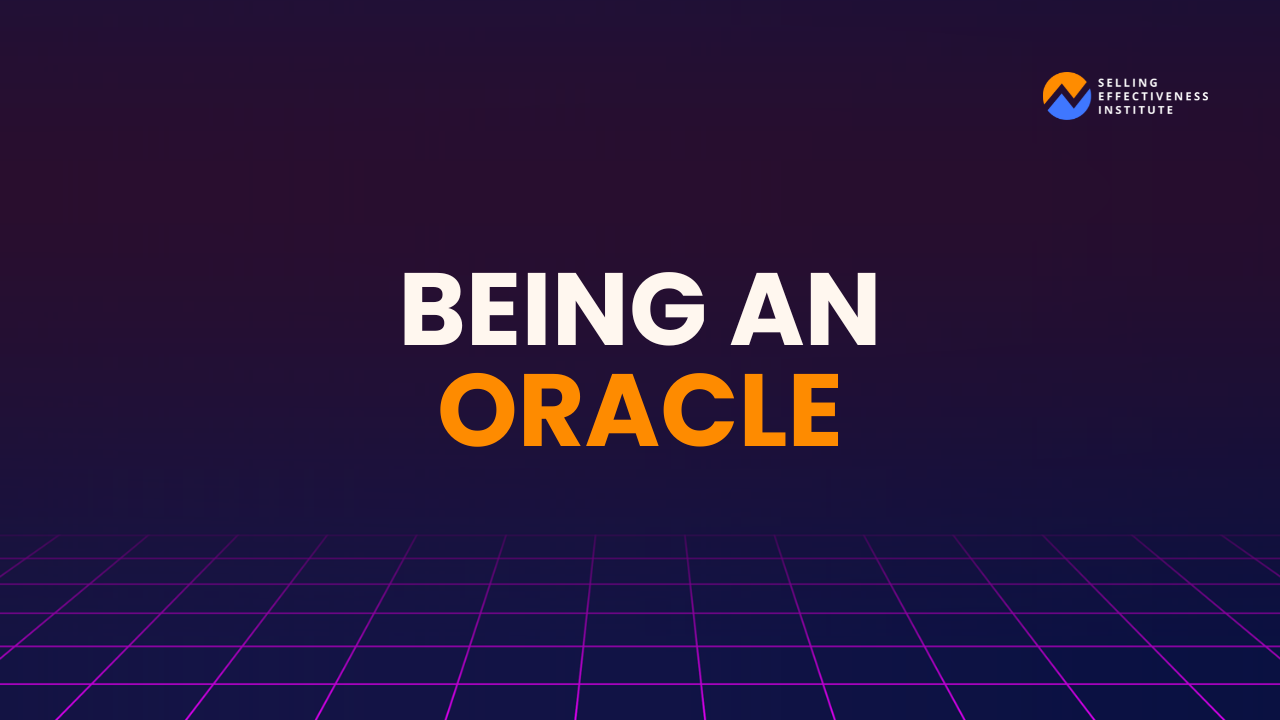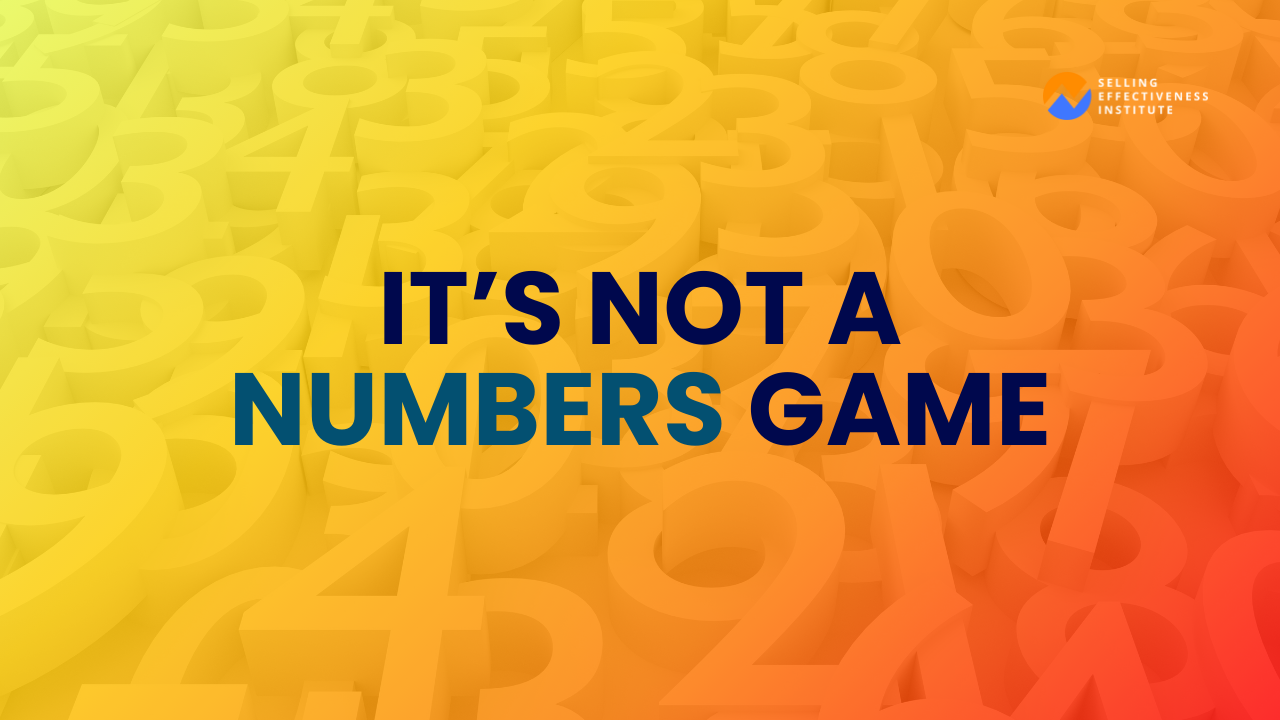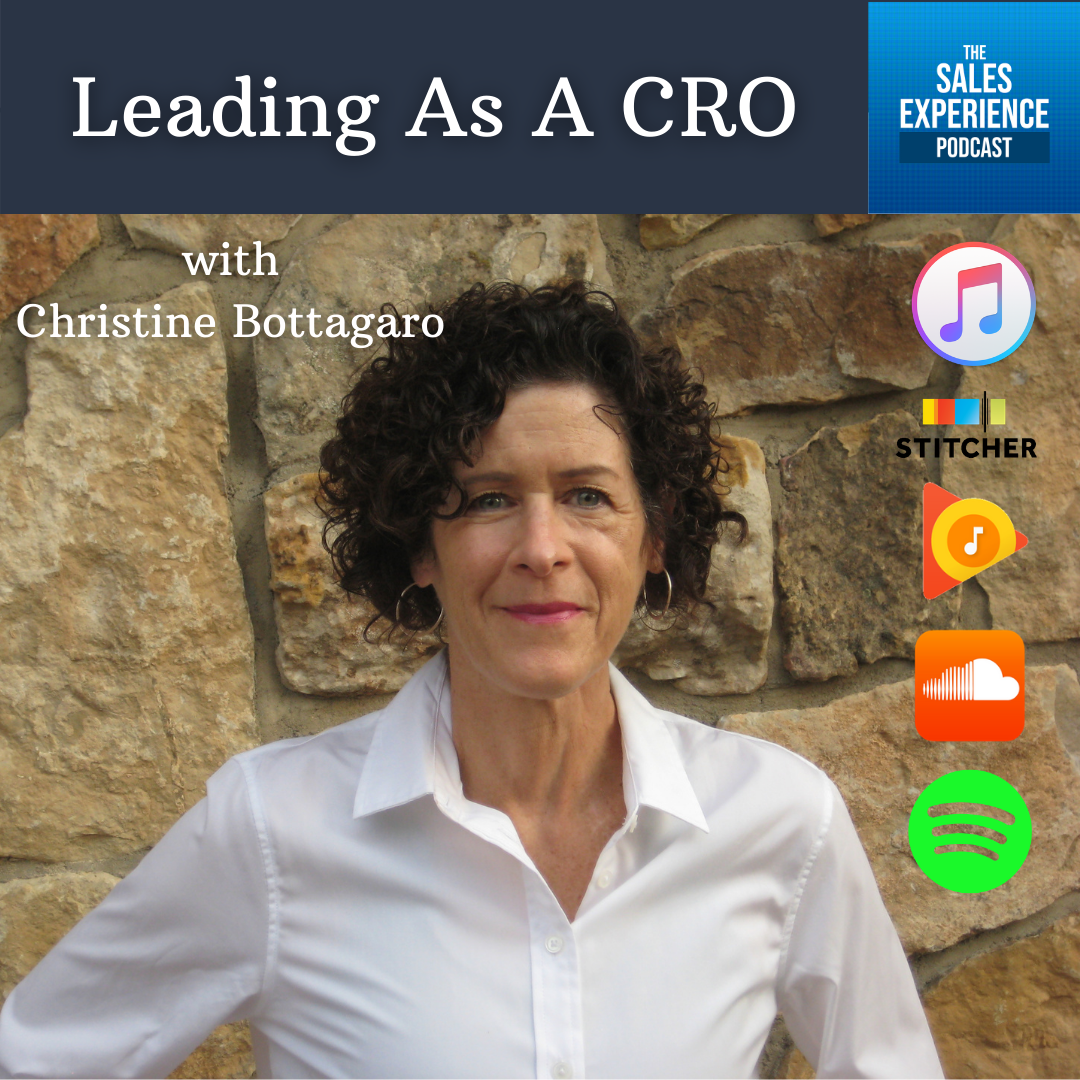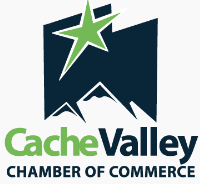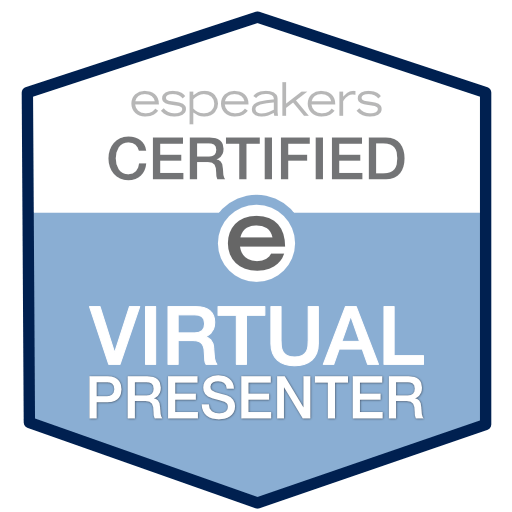Jason: Welcome back to the show. Welcome to the final part of my conversation with Christine Bottagaro. We're just keep on rolling this final part here. One thing we're going to talk about right at the end. Is how much information should you put on your web form from a company perspective? Do you want to put a little bit of information so you can get a lot of leads on filtered or a lot of information, a lot of fields on your form so that it's very narrow, very few people, but higher intent.
And we talk about the thought process and the strategy behind either end of that or in the middle. So here you go. Part four. Enjoy.
Christine: Hey, Bob, this really feels like a struggle lately. Tell me what's going on. And. Cause I think we have to make a change and have that real conversation. And you never know, maybe there's something on the personal side.
Like I would want to be empathetic and they take some time. We'll backfill or you know what? I really love sales ops. I want to move into that. I'm like then let's talk about that. So I think maybe a little faster to conversation, maybe not as fast to pull the paperwork.
Jason: And I think there's a couple of ways to look at that in the context of.
You hired somebody, they interviewed well, they sold you really well, they sit in the seat, it was all a front, and they're not actually good at what they do, or want to work that hard, or they used it all up in the interview, which I've seen, that's where for me, it's usually a fire fast, or maybe move them to another department if they're really a good cultural fit, like they really want to be a part of it, and they're a good fit for the core values, and they're really on board with the mission, and Then see if there's another place, otherwise fire fast because it's not going to work.
Those other things you're talking about. Yeah. Those conversations. And the one thing I always remind managers and owners are is that if your employee sales rep or any department is not performing and hitting their numbers every day, they're going home miserable and feeling like a failure. And you don't want to have to terminate somebody or have those tough conversations.
But if they're not doing it on their side because they're afraid, then you're doing them a service. by bringing it up and or letting them go because life is too short to do stuff that you hate.
Christine: Yeah. Amen. And there should be such joy in what we do, like being able to talk to people and being able to help them.
And that's where one of my big mantras is that in every meeting and every conversation, every interaction, email, whatever it is, you're bringing value to whoever you're talking to. So hey, Jason, I just read this article this morning and I thought it was really relevant about your book and it might help you.
And then can we talk about what our engagement is? And I just made that example up. But if you're doing that, then you go home and you may not win that deal, but you sure feel good about being able to enlighten somebody about their business in a way that guides them and helps them. them. And then you're building towards trusted partnership.
And then all the good things that happen instead of just somebody who sells stuff, right? So can you help people solve a problem that they're looking to solve? And can you enlighten how they might do that?
Jason: And depending on what you're selling and the sales cycle, because sometimes it might be a short sales cycle, depending, cause I deal with a lot of different people out there, direct to consumer business.
It's all about playing the long game, right? No matter what, relative to what you're doing. If you sell something, that's generally a one call close. You can only play so much long game, but you still got to think long term and relationships. And it's more than just this one transaction. But yeah, it's trusting in abundance and long term and you plant enough seeds and you do things right and you put in the activity every day and you'll get there.
So regarding marketing, Christine, talking about that side, one thing I wanted to ask you about before we end is. We had talked about this briefly weeks ago is the balance on web forms for setting demos with the amount of qualifying questions. Cause I have this debate with so many different people. They want to do two quite like email and phone number or email and name and don't even ask for a phone number.
Cause people don't want to share it. They don't want to schedule anything versus like full on application mode on the other end. Yeah. Where's your experience?
Christine: Yeah. This is such a good thing to talk through, and I can understand there's so many opinions on it. Here's where I come from. Honestly, Jason, if I had my druthers, I would open up everything on our website.
I would not gate any information whatsoever, because here's the reality is, people are going to find a way to get educated, and if it's not from you, it could be from your competition. So if you can guide that, the better. Here's where I have to caveat, and hopefully you're not going to just take that soundbite on its own.
Don't bring it all up, but is that I measured on the things that I deliver to the business and those are leads and those leads come from organic from the website. So you have to balance it. And the way that I look at it is to say what value are we offering from this asset, from this access. If you want, a how to guide, I'm probably going to gate that because that's pretty needy information around our product and what it means and what it looks like.
If it's a competitive guide, I'm not going to gate that. Use cases, never gate those. People want to read about other people and how they've solved a problem using your own technology. Why would you make that hard for them to access? But when you look at, again, in my space, a demo, free trial, a taste of the product, Hey, come try our shoes, whatever it is, then I'm going to ask you to put some skin in the game.
And it serves two purposes. One is it helps me qualify. If you're not willing to do that, then you don't get access to my software. And the other is it helps me understand what problems you're solving. So what I like to do is. We populate as much as I can with as little information as I can. So by that, I mean I can data enrich.
I know where you live because I can find you on LinkedIn. So give me your email address, your first and last in your company. And then I can do a lot of work behind the scenes. It could be creepy, but it's the reality of we know who you are. So I can. Append your profile. And then I may ask you some questions like, what are the things that you're hoping to solve for, Jason, because I want to understand if we can help you.
And then for that first touch, BDR, SDR, that's reaching out. Hey, Jason, it looks like you're trying to solve for observability. Let me talk to you a little bit about that or help me understand more. So you've already skipped a step, which is hi, I'm with XYZ Corporation. How can I help you? And then you're like, so in a way, again, you're adding value.
It helps to drive the conversation. Or to say, you know what? It sounds like you're trying to solve for this. We also solve for these other three things. Are those interesting to you? Yeah, they are. In fact, we were just talking about it. Great. Then let's move on. So just going back to your original question is understand the value that you're providing with the asset that you're Giving access to, and then gate accordingly.
And the more forms you have, or the more form fields you have, the less you're going to get the fewer responses. It's like you lose three X for every one box. So just know that. And if you're looking at a really wide funnel, getting a lot of volume, just email. If you're looking at, let's qualify a little bit, then ask for first, last company name and email.
Again, if you can go to the next step, which is ask for some use cases or what need are you trying to solve? I think that's best case because it does serve the buyer
Jason: in what you're saying. The takeaway I'm hearing when you describe all that is like you said the funnel and the quality versus the quantity, right?
I guess you're it. And generally what it is it's intense. So do you want somebody who has high intent? They know that they have an issue. Or do you just want anybody with a pulse and you want to try to convince them and move them forward? And it's really, in my opinion, two different marketing and two different sales approach.
There's the salesperson who thinks they can talk anybody into anything given enough chance, right? And they just want. I just want a hundred at bats. Don't filter it for me, marketing person, because I know if I talk to a hundred people, I'll sell them versus somebody who's give me 10 people who are interested and have an issue.
And then I can actually spend my time on them instead of chasing. And it's really a bandwidth and a mindset, again, a quality versus quantity.
Christine: Yeah, absolutely. And a managerial issue too. Do I want that person talking to 100 people, 2 percent of which are going to convert? Or do I want them talking to 20, 50 percent are going to convert?
So I think at some point, but if you're early cycle and you're trying to create awareness, again, go back to the organizational goals. We want to get in front of as many people who have a beard that we can. Great. Then let's go do that. Then you start adding qualifiers. So again, it goes back to what you're trying to achieve.
Jason: And I think it also comes down to how well you know the people that you want to be talking to. If you're early stage and you're still figuring it out, and you think you know the group that you're solving problems for, but you're not sure, wide funnel, wide net, let's see what happens and then let's narrow it down.
I talked to somebody yesterday where it was like, yeah, over time what we've done is we've narrowed it down and we realized, oh, this is the group that we're actually targeting. Let's trim out everything else and let's go very specific. Over time because we now know what we want to do and I think that's the difference is where are you at in that cycle and again, is it we know who we want to talk to and we want only those or I won't say desperate, but we just want to talk to anybody and everybody.
and do what we can
Christine: and learn from that. I would add a piece to that. I think you're right, Jason. But right now in early stage at resurface, we have some really good bets about the problem we're trying to solve. We're talking to all kinds of folks. And what we're hearing is people are like actually there's a lot of value using this in pre production.
We hadn't really thought about that. It's more troubleshooting, blah, blah, blah. But to hear that now, I'm okay, of the use cases, we're adding a new one because we've had these conversations because we're iterating on that and we're learning from it. So if you're in that talk to a hundred people, but you better make sure that rep is tracking what the needs are and what they care about and what's important.
And then that can feed through the product and marketing cycle. And then everyone gets smarter.
Jason: And we could make this a two hour episode and dove into CRM and tracking and performance and metrics, but we won't maybe another time come back on the show because obviously that tracking is important.
Otherwise, you're just hoping and that doesn't work, right? Yeah. Like I say, from time to time that you're just playing pick up. Basketball at the YMCA and hoping to win championships versus how a professional organization operates. Yeah. So where is the best place for people to track what you're doing, get in touch with you, see what kind of cool stuff you're creating and let's say your CRO journey.
Christine: Yeah, I appreciate that. I think LinkedIn is really the great place for me. I will post blogs periodically and then we're at resurface. io. Which is API monitoring for user side data. So it's a cool solution, but right now looking at website redesign and all of that. So don't judge me just yet, but I think LinkedIn just from a personal is the best place.
Jason: And anybody who has been a part of a early organization, early stage new will hopefully be empathetic and be like, okay, the website. And again, reverting back websites don't necessarily sell. I've actually talked to sales teams and reps where it's like, websites don't matter. Even demo if you know how to solve someone's problem, you don't need to do long demo dog and pony show PowerPoints.
People sold stuff for quite some time on the planet without PowerPoint and a website.
Christine: It's so true. We've got a new record in our company of a 48 second head nod where we just start talking. We're like, here's what we do. And people are like, yep. Okay, now let's get into the how it happens. So if you can get that head nod early, then roll with it.
You don't need any of that stuff.
Jason: There you go. Christine, thanks for being on the show. And from the standpoint of the CRO, the sales, the marketing, your whole journey. And doing your part to combine it together and all the advice. I appreciate you being honest and sharing this with the sales experience audience.
Christine: Absolutely. You made it super fun. I can't wait to talk again.
Jason: That's it for another episode of the sales experience podcast. Thank you so much for listening. If you find yourself on iTunes, can you leave the show a rating and a review? It helps other sales people and sales leaders find the show and please subscribe to the show and share episodes you find valuable with anyone you know in sales.
Help me on my mission of changing the way sales is done. And if you're ready to work together, go to Jason cutter. com. Again, that's Jason cutter. com. To find out how I can help you or your company create scalable sales success. I will see you on the next sales experience podcast episode. And keep in mind that everything in life is sales and people will remember the experience you gave them.



